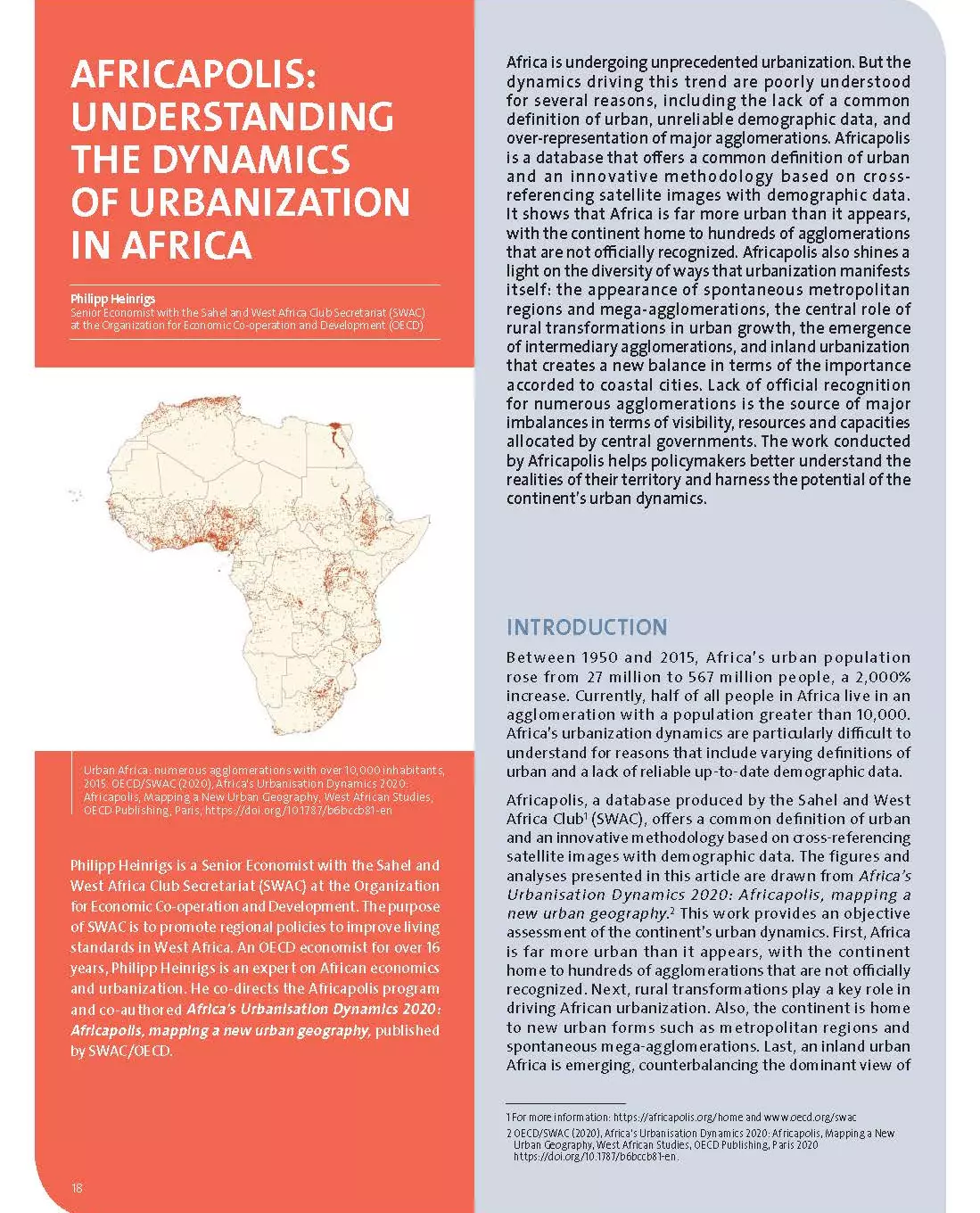Philipp Heinrigs
Senior Economist with the Sahel and West Africa Club Secretariat (SWAC) at the Organization for Economic Co-operation and Development (OECD)
Africa is undergoing unprecedented urbanization. But the dynamics driving this trend are poorly understood for several reasons, including the lack of a common definition of urban, unreliable demographic data, and over-representation of major agglomerations. Africapolis is a database that off ers a common defi nition of urban and an innovative methodology based on crossreferencing satellite images with demographic data.
It shows that Africa is far more urban than it appears, with the continent home to hundreds of agglomerations that are not offi cially recognized. Africapolis also shines a light on the diversity of ways that urbanization manifests itself: the appearance of spontaneous metropolitan regions and mega-agglomerations, the central role of rural transformations in urban growth, the emergence of intermediary agglomerations, and inland urbanization that creates a new balance in terms of the importance accorded to coastal cities. Lack of official recognition for numerous agglomerations is the source of major imbalances in terms of visibility, resources and capacities allocated by central governments. The work conduct ed by Africapolis helps policymakers better understand the realities of their territory and harness the potential of the continent’s urban dynamics.



